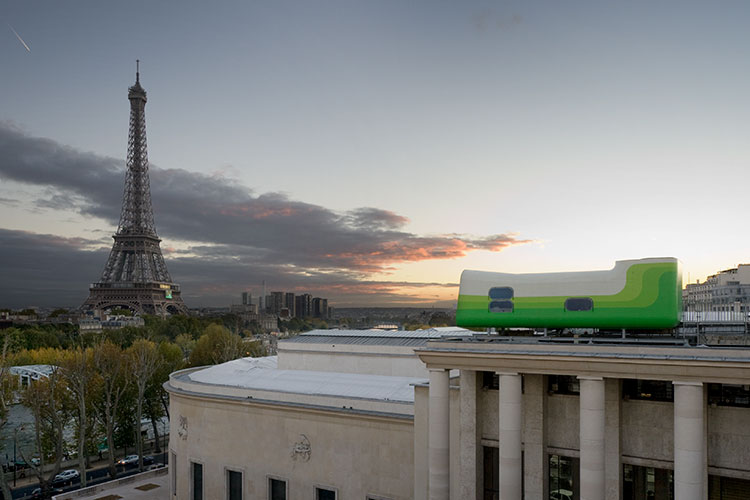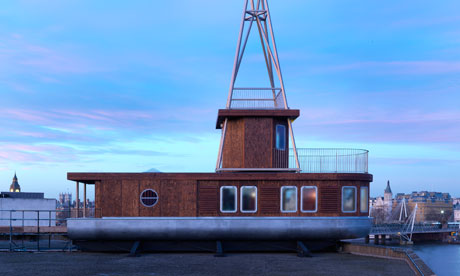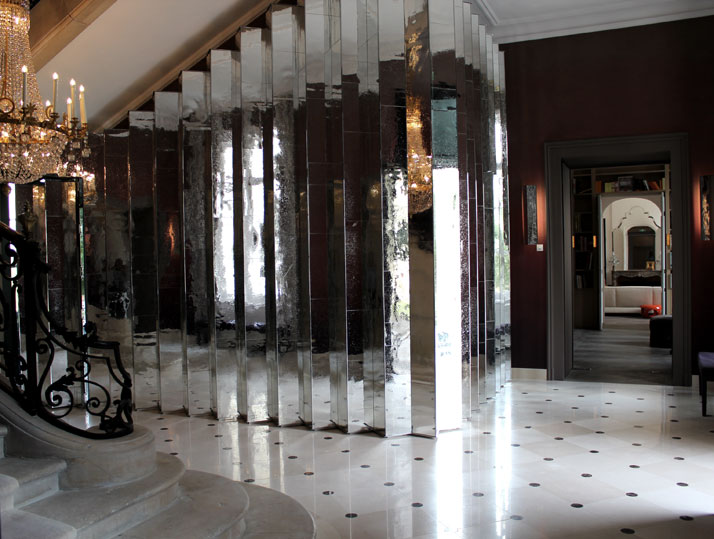Sophie Maxwell, Insight Director at Pearlfisher, investigates how the shift from owning luxury to experiencing luxury is impacting luxury hotels

Sophie Maxwell, Insight Director at Pearlfisher, investigates how the shift from owning luxury to experiencing luxury is impacting luxury hotels
Hotel du Marc Veuve Clicquot Ponsardin
A recent study by the Boston Consulting Group (BCG) identified a shift from “owning a luxury to experiencing a luxury” with bespoke treats now accounting for more than half of the $1.4tn spent on luxury goods and services last year (The Guardian). Travel has always been a mainstay of the luxury market – a luxury in our lives with desire created for journeys and destinations that aim to be both extraordinary and highly aspirational.
Today however it is no longer about ticking the boxes with a one-of-a-kind destination holiday, multi starred hotels or a far-flung Spa. Now it is their difference that sparks our interest and instead we are seeking destinations that create new doorways to the unexpected… We are shifting towards a new luxury experience with unique escapism matched by an individual aesthetic.
Accommodation is perhaps becoming important than the destination – or actually becoming the desired destination. The boutique sector certainly coined this approach to take the hotel and hospitality sector in a brand new direction. But the hotels that are really winning out now are those catering for every different type of personality and taste. And this is becoming ever more thoughtful and tailored.
“ Bespoke treats and luxury ‘experiences’ now account for more than half of the $1.4tn spent on luxury goods ”
To date, the most emergent behavior is coming from the one night only hotels. The excitement and novelty of the one night rule is a huge draw for the experiential consumer but it is also about the very unique nature of the location or room of these hotels. The owners of these venues are assuming the role of creators – or actually curators – as they define the character and personality of their establishment and location through the architecture, design and art work.
From the Chateau Marmont in Hollywood – with its legacy as a muse for generations of artists, photographers, novelists and screenwriters – to the pop-art proliferation of Philippe Starck – who designs his hotels by developing scenarios that will lift people out of the everyday and into an imaginative, abstract world – the link between art and hotels is nothing new.
But what is new, is the shift from the prescriptive to the privileged and the offer of a more intimate, fluid and custom-made artistic environment. These one night only establishments invite you to ‘experience the artwork for yourself’ as is the case with Hotel Everland – a project by the artist-duo L/B (Sabina Lang and Daniel Baumann).

The Everland Hotel at Palais de Tokyo, Paris 2007
Everland is a hotel with only one room including a bathroom, a king-size bed and a lounge. The bounteous dimensioned room represents the subjective dream of a hotel: the architecture, the playful details, as well as the request to steal the golden embroidered bath towels. All Everland guests are partaking in the project.
The concept for operating the hotel was defined by the artists and all facets of its aesthetic and operation are important constituents of the artistic idea. It has also moved locations: from the roof-deck of the Museum of Contemporary Art in Leipzig, Germany to Paris as an installation on the roof of the Palais de Tokyo.
A Room For London is a similar concept. The boat-like structure, complete with pyramidal steel mast, temporarily anchored to the roof of London’s Southbank centre is, in fact, a rentable one-roomed apartment by London architect David Kohn and artist Fiona Banner. It will remain atop the Queen Elizabeth Hall until the end of this year and is modelled on the riverboat that travelled the Congo in the nineteenth century in the Joseph Conrad novella ‘Heart Of Darkness’.
“ What’s new is the shift from the prescriptive to the privileged, the offer of a more intimate, fluid & custom-made artistic environment ”
The concept provides an opportunity for tranquil refuge and reflection amidst the flow of traffic. This is a perfect example of the thoughtful and considered behaviour that is setting these establishments apart and also highlights the value of borrowing from different creative categories.
Hotel Daniel Vienna has adapted the concept on a slightly larger scale offering ‘smart luxury’ for an ‘urban stay’ and pulling all different lifestyle and artistic elements together to provide ‘opportunities and inspiration’: from a room with a hammock and the hire of Vespas and bicycles to the opportunity to have breakfast in its own artisanal bakery in the hotel lobby…
Everland, A Room For London and Hotel Daniel are suitably eclectic – expertly creating a brand new and targeted consumer experience by offering both art and a deeply immersive experience in different forms. Daytimes are just as important as night and the cultural spaces they create are the result of completely rethinking the experience and activities a hotel can offer.

A Room For London, temporarily anchored to the roof of London’s Southbank centre
But the big chains can also take and translate learnings on a mass scale and should understand that there is a very real opportunity for all – and that it’s not just about being ‘bed factories’.
A prime example of how to lead a change and take the inhabit art concept into a bigger hotel comes in the form of Mayfair’s new Balderton Street Hotel, due to open early 2013. Antony Gormley – famed for the Angel of the North and the fourth plinth – is creating an ‘inhabitable sculpture to be used as a guestroom’.
But it’s not just about art for art’s sake. Artist collaboration should only ever be considered if it has deep authenticity, true credibility, instinctive brand synergy and real emotion. And maybe, most importantly, a balance, so that one does not overshadow the other.
And I can truly talk about this from personal experience with a stay in two hotels (in the same week) in the Fasano chain in Brazil. The first in Sao Paula was stylish and sympathetic to the environment. It respected the old and celebrated what was special and synchronistic about the hotel’s past and its relations to its location.
“ Artist collaboration should only ever be considered if it has deep authenticity, true credibility, instinctive brand synergy & real emotion ”
The second, a Phillipe Starck collaboration would, in isolation, be seen as a great Starck experience and – whilst it was reflective of Rio’s vibrancy and colour – it was both too much and too little when compared to its counterpart; losing its character and heritage to fit a the idea of a ‘hot’ designer template.
The collaboration will not add value or a pull for the consumer if it is not real. It should only happen if it has real meaning for the brand and is a meaningful and symbiotic partnership. Otherwise – as with the case of the Fasano in Rio – it just becomes a superficial, confusing and generic connection.
It’s about being truly special, creating experiences based on passion and greatness to build an on-going experience that is personal and keeps people intrigued – and coming back.

Hotel du Marc Veuve Clicquot Ponsardin
Reopened at the end of 2011 (after a four year break) Hotel du Marc Veuve Clicquot Ponsardin is regarded as the pinnacle of destination design and artistic evolution.
The neoclassical structure is complemented on the interior by an evolving gallery of modern and traditional elements throughout: one-off commissions such as Pablo Reinoso’s Spaghetti bench sit alongside over-sized portrait paintings and original artworks and features. It is resolutely true to its original ideals and aesthetic and truly special – not just by nature of its invite only clientele – but through its wealth of beauty and detail.
“It’s as if you’re spending the night inside the bastard lovechild of the Louvre & Tate Modern,” James Davidson, Editor-in-Chief @buckhouston said of his own stay there.
According to the same study by BCG, the business of providing luxury experiences is now worth $770bn. It would seem that the tables have definitely turned. Collecting art as a luxury pastime has morphed into indulging in the luxury of creating immersive and interactive experiences inspired by art. And although there are already many amazing destinations and venues emerging, the opportunity for the hotel sector is still wide open.
To further investigate luxury hotels on Luxury Society, we invite your to explore the related materials as follows:
– The Latest Hotels: Jaipur, Casablanca & Vienna
– 8 Travel & Lifestyle Trends in Social Media
– The Most Searched For Luxury Hotel Brands in China










